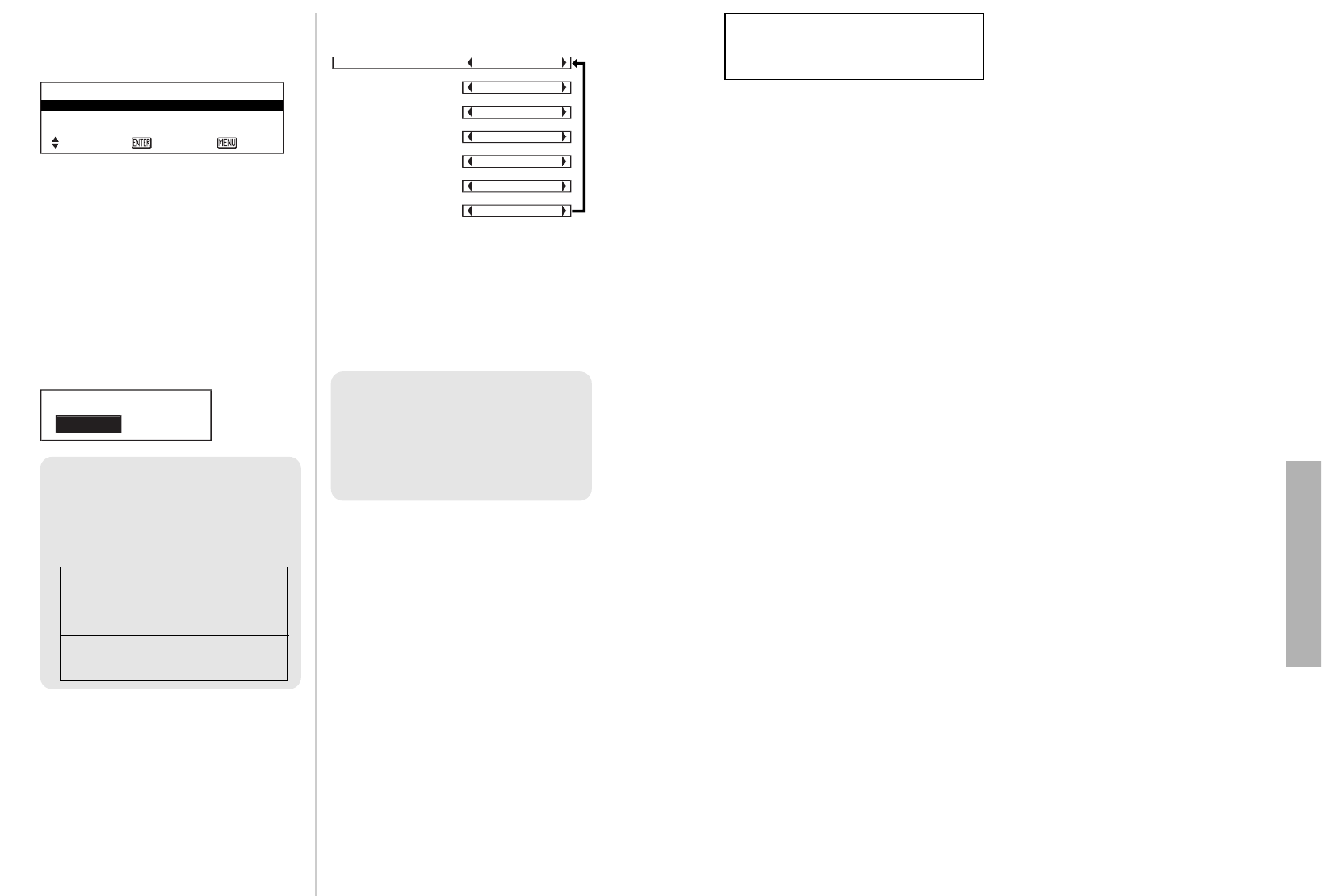
ENGLISH-39
Adjustments and settings
38-ENGLISH
MEMORY SAVE
Press the ENTER button to display
the “MEMORY SAVE” menu.
The settings adjusted in “PICTURE”
menu can be saved. Press the F or
G button to select the number in
which you want to save the setting,
and then press the ENTER button.
The confirmation screen will then be
displayed. Press the I or H button
to select “OK” and then press the
ENTER button.
The current picture setting will be
saved.
MEMORY LOAD
Press the ENTER button to display
the “MEMORY LOAD” menu.
(If any setting is not saved in the
“MEMORY SAVE” menu, the
“MEMORY LOAD” menu will not be
displayed.)
Refer to page 31 on how to retrieve
the saved settings.
TV-SYSTEM
(S-VIDEO/VIDEO only)
This should normally be set to
“AUTO”. If the signal is of such poor
quality that the correct format
cannot be automatically
distinguished, change the setting
manually to the required TV system.
SIGNAL MODE
(PC/YPBPR/DVI only)
This displays the type of signal
which is currently being projected.
Refer to the table on page 54 for
details on each type of signal.
TV-SYSTEM AUTO
[
NTSC
[
NTSC4.43
[
PAL
[
PAL-M
[
PAL-N
[
SECAM
NOTE:
BWhen set to “AUTO”, the
projector automatically
distinguishes between
NTSC/NTSC 4.43/PAL/PAL60/
PAL-M/PAL-N/SECAM signals.
Projecting sRGB-
compatible pictures
sRGB is an international color
reproduction standard (IEC61966-2-
1) established by the International
Electrotechnical Commission (IEC).
If you would like the colors in sRGB-
compatible pictures to be
reproduced more faithfully, make
the following settings.
#Press the F or G button to
select “PICTURE MODE”, and
then press the I or H button
to select “NATURAL”.
$Press the NORMAL button on
the remote control unit.
%Press the F or G button to
select “LAMP POWER” in the
“OPTION” menu, and then
press the I or H button to
select “HIGH”.
MEMORY SAVE
MEMORY 1
MEMORY 2
MEMORY 3
SELECT ENTER ESC
MEMORY SAVE
OK CANCEL
NOTE:
BYou can save up to 3 settings
for each of the 2 signal groups
described below (up to 6
settings can be saved).
S-VIDEO, VIDEO, YPBPR, and
HDTV50/HDTV60 signals from
DVIs and PCs
PC and DVI (except for
HDTV50/HDTV60 signals)


















